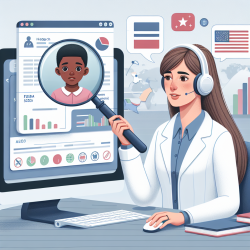Empowering Our Future: The Power of Community in Speech Therapy
In the heart of every thriving community lies a shared commitment to empowering its youngest members. As school social workers, you play a pivotal role in this mission, especially when it comes to supporting children who require speech therapy. By leveraging the power of community, we can create an environment where children not only receive the care they need but also thrive in their personal development.
Online therapy services, such as those provided by TinyEYE, are reshaping the landscape of speech therapy in schools. These services offer an inclusive and accessible solution, ensuring that every child, regardless of location or circumstance, has the opportunity to succeed. This is particularly important for children with autism, who often require specialized speech therapy interventions.
The Role of Community in Speech Therapy
Community is not just about being in the same place; it's about working together towards a common goal. For school social workers, building a strong community around speech therapy involves:
- Collaboration: Partnering with teachers, parents, and therapists to create a supportive network for children.
- Communication: Ensuring open lines of communication between all parties involved to tailor therapy plans to each child's unique needs.
- Education: Providing resources and training to parents and educators to reinforce therapy techniques outside of sessions.
Data-driven approaches are essential in speech therapy. By analyzing data from therapy sessions, we can identify trends, measure progress, and adjust strategies to maximize outcomes. This evidence-based practice not only enhances the effectiveness of therapy but also empowers social workers and therapists to make informed decisions that benefit the child.
Inspiring Outcomes Through Online Therapy
Online therapy platforms like TinyEYE are breaking down barriers to access, providing children with the tools they need to succeed in their speech therapy journey. The flexibility and convenience of online therapy mean that children can receive consistent support, which is crucial for their development.
By integrating online therapy into the school environment, we create a seamless support system that aligns with each child's educational and therapeutic needs. This holistic approach not only fosters better outcomes but also inspires confidence and self-actualization in children as they achieve their speech therapy goals.
Conclusion
As we continue to navigate the challenges and opportunities of providing speech therapy in schools, the power of community remains a guiding force. By working together, leveraging data, and embracing innovative solutions like online therapy, we can create a brighter future for our children. Let's continue to build a community that empowers every child to reach their full potential.










